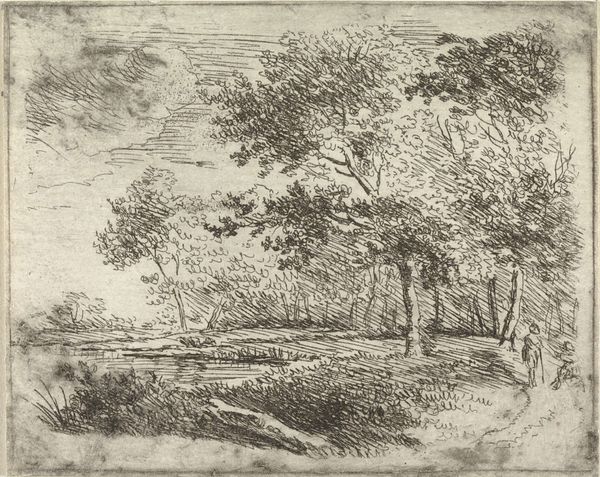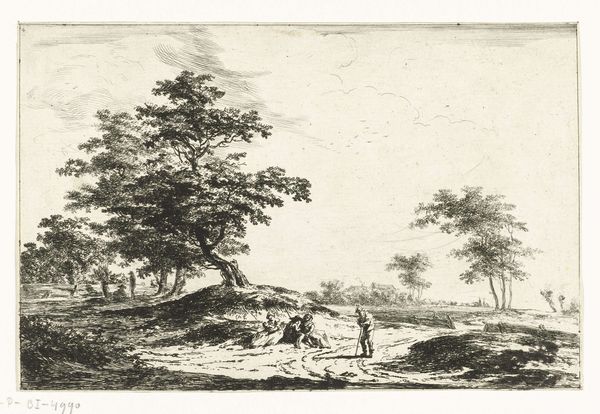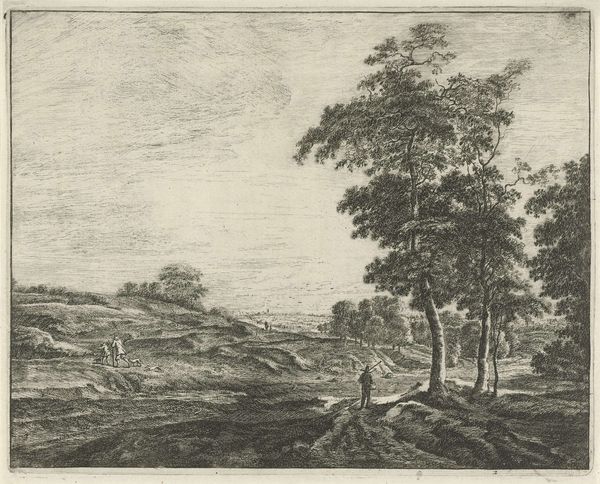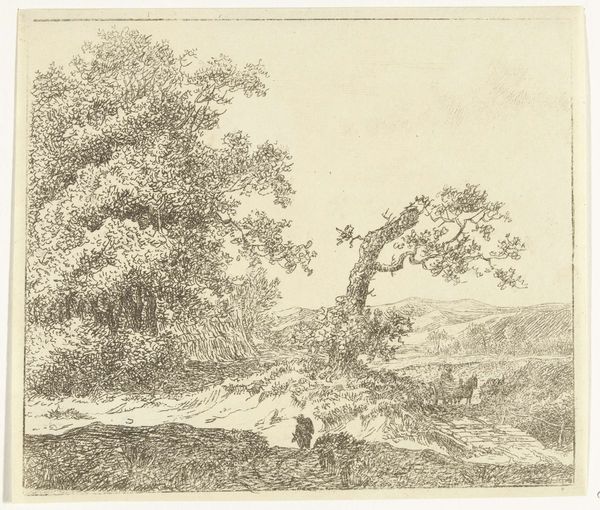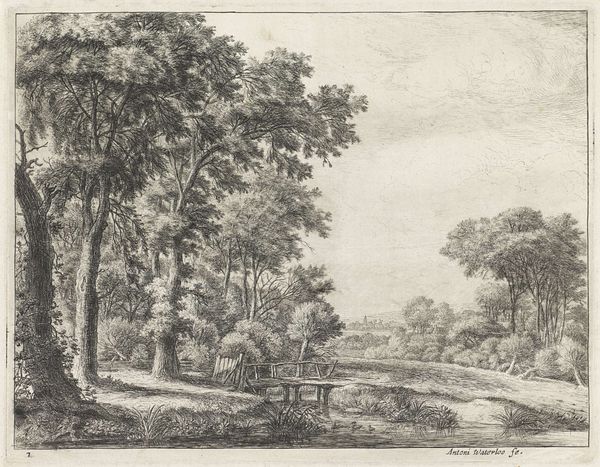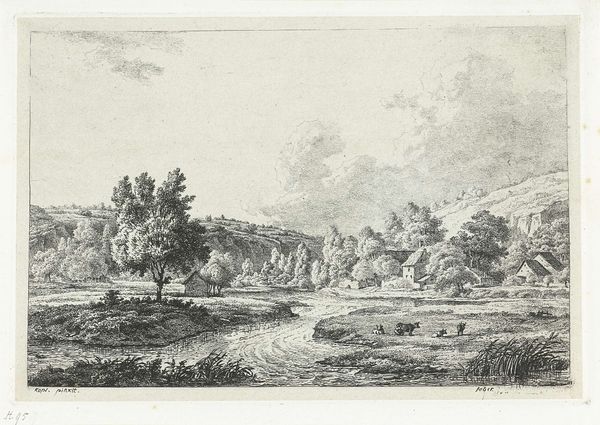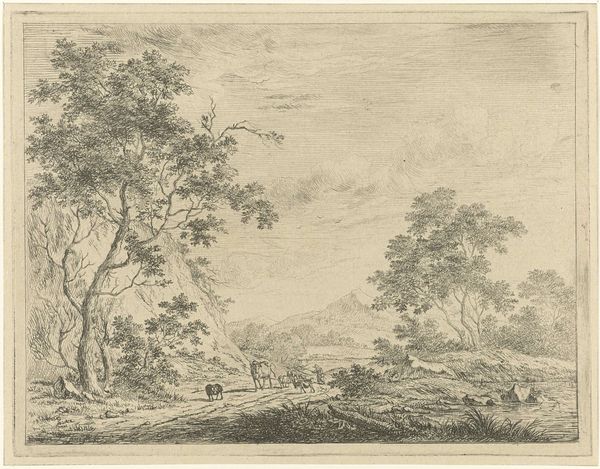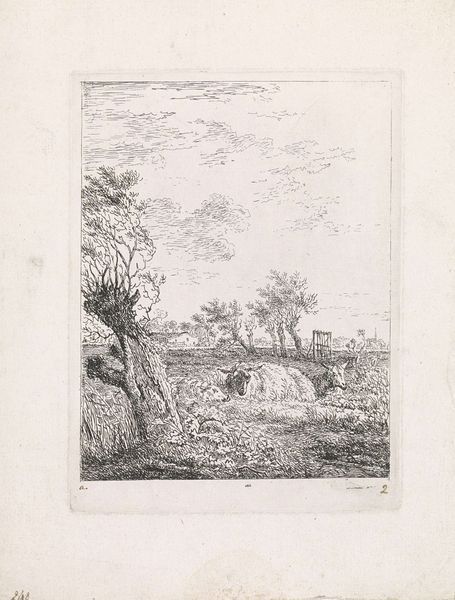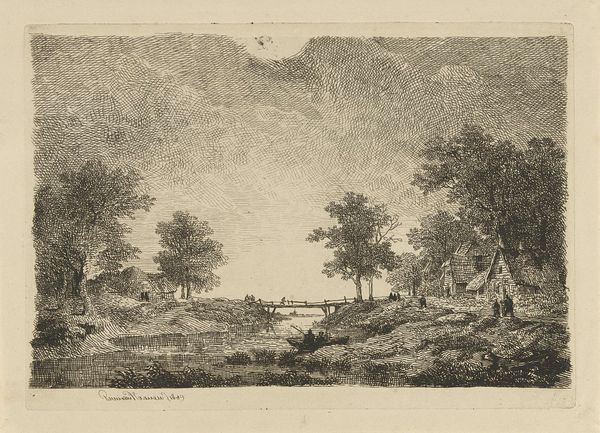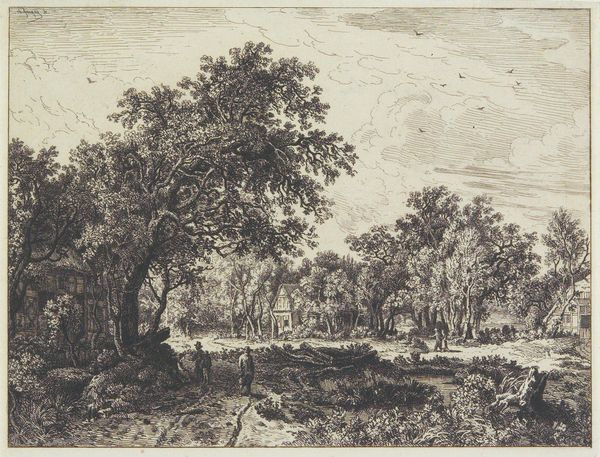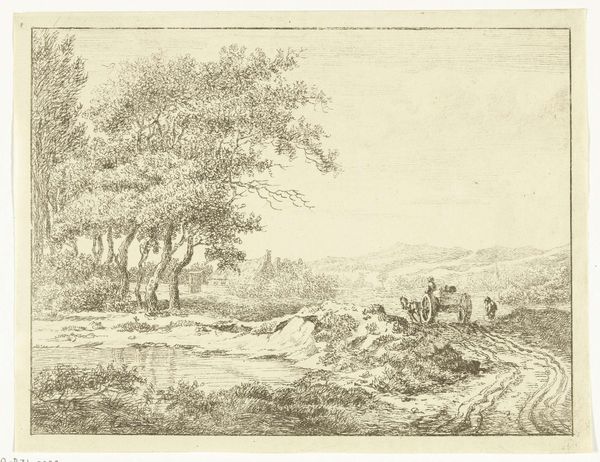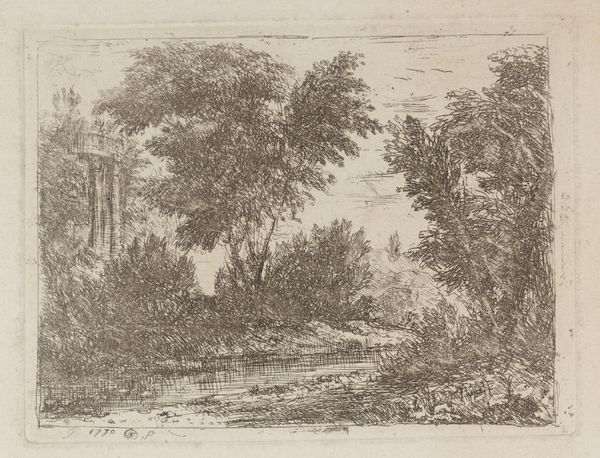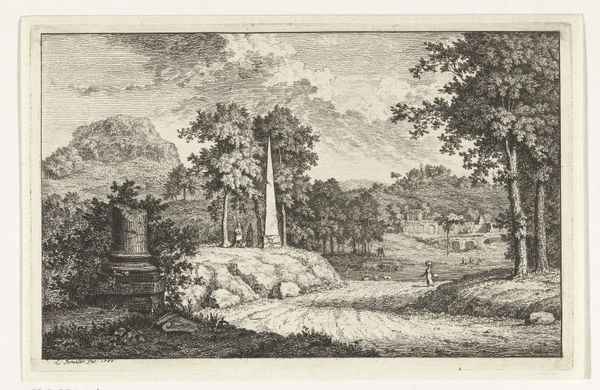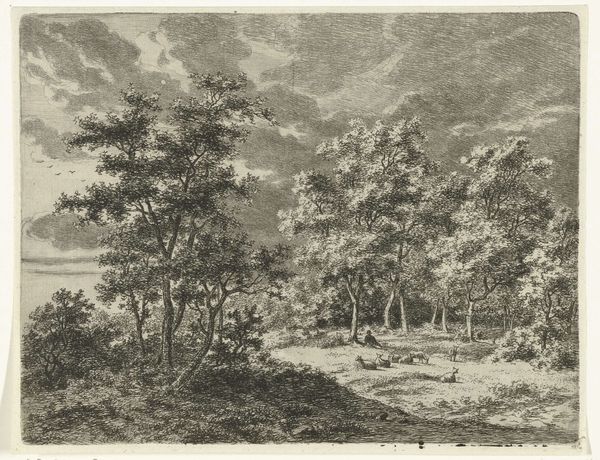
#
landscape illustration sketch
#
amateur sketch
#
light pencil work
#
pen sketch
#
pencil sketch
#
old engraving style
#
pen-ink sketch
#
pen work
#
pencil work
#
fantasy sketch
Dimensions: height 79 mm, width 108 mm
Copyright: Rijks Museum: Open Domain
Curator: Let's turn our attention to this subtly compelling work, "Landscape with a Man with Pigs," by Philips Augustijn Immenraet, dating sometime between 1637 and 1679. It's currently held here at the Rijksmuseum. Editor: It possesses an arresting quality. A blend of pastoral scene and some looming emotional undercurrent seems evident through its skillful etching, making effective use of light and shadow, particularly in the depiction of the figures—human and animal—in contrast to the surrounding open fields and towering foliage. Curator: Indeed, the seemingly idyllic subject matter--a man tending to his pigs-- is placed within a carefully constructed social framework. In 17th century Netherlands, depictions of peasants and animals often reflected the era's socio-economic anxieties regarding land ownership and rural poverty. The image operates in tandem with prevalent concerns about human-animal relations—especially the dependence between wealthy people and animals used in animal production or the peasant class and working animals. Editor: You know, looking closer, the presence of the church spire in the distance, juxtaposed with the earthy pragmatism of the man and his pigs, strikes me as particularly evocative. Church spires often stand as potent symbols of order and guidance—that the pigs and man occupy such prominent visual space creates a really tense dynamic. In terms of my practice, animals such as the pig are often given short-shrift—either considered comedic, thought of as dirty or delicious, not often imbued with their own subjectivity and dignity. Curator: Absolutely. Consider how Immenraet utilizes what one could describe as vernacular imagery to depict both faith and social realities. Pigs, viewed through a patriarchal framework, have always stood as reminders of feminine knowledge and feminine abjection. Editor: Do you believe, then, that there is something intrinsically "feminine" or "earthy" attached to the presence of a drove of swine? Or is that we assign these characteristics through a specific patriarchal gaze and resulting interpretations? Curator: In part, this reflects centuries of embedded semiotics. Immenraet, by showing us this ordinary pastoral tableau, provides a layered commentary on hierarchy and its effects on labor and spiritual life. Editor: What resonates with me most about Immenraet’s print, and, perhaps 17th-century Dutch art in general, is that commitment to capturing the small truths about living. Not necessarily small as insignificant, but perhaps closer to intimate. A way to show rather than tell. Curator: Yes, his sensitivity to what you termed the intimate allows us a view of his present, so that it can inform our future. Editor: Quite right; these details embedded throughout Immenraet’s artistic vernacular may serve as a guide to a greater symbolic comprehension that transcends the immediate observation.
Comments
No comments
Be the first to comment and join the conversation on the ultimate creative platform.
